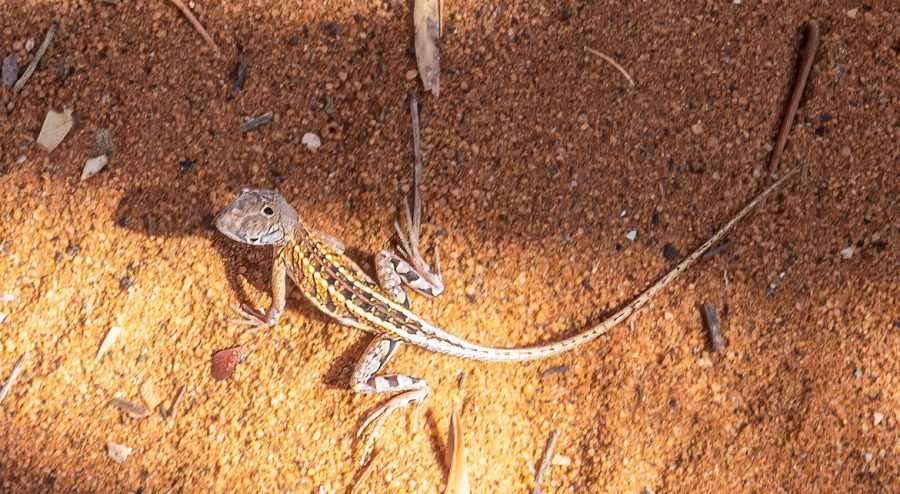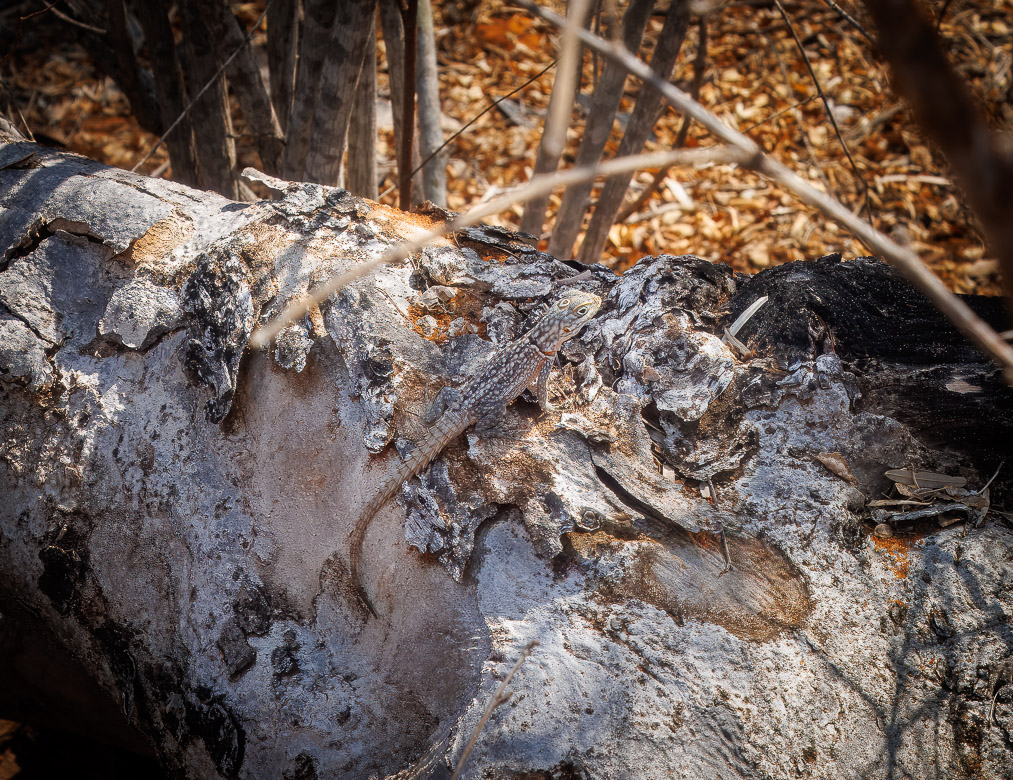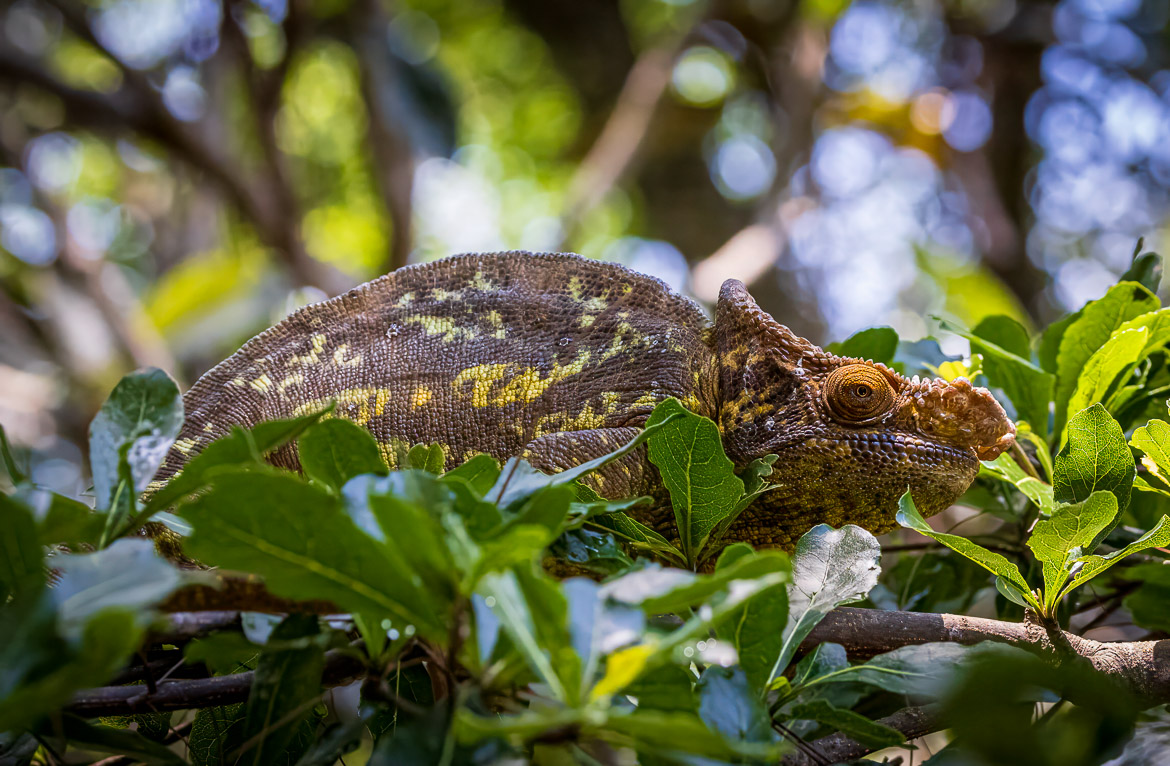
It has become 2025 but I will stay with my stories about the visit to Madagascar in November 2024 for a while. But now we shift to another species, Chameleons, where Madagascar is the best country in the world to find them. And for me it was the first time ever to see and photograph chameleons in the wild.
Chameleons are a type of Old-World Lizard and there are around 200 species of chameleons known, and Madagascar is home to more than half of those species.
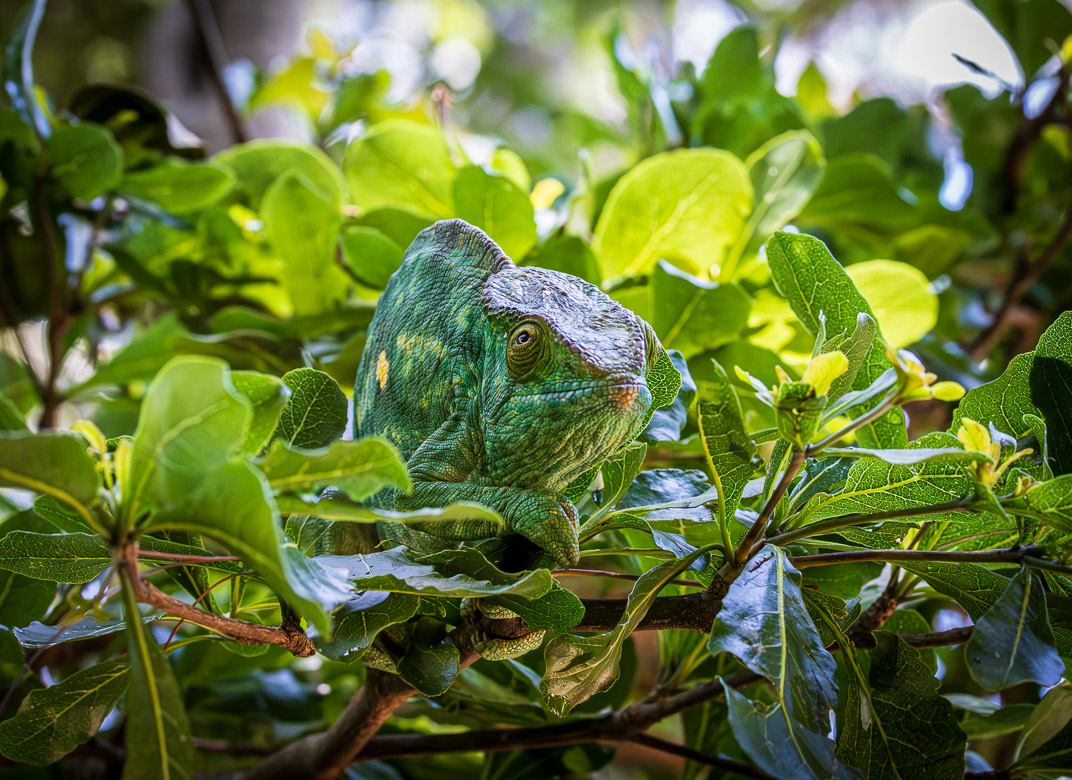
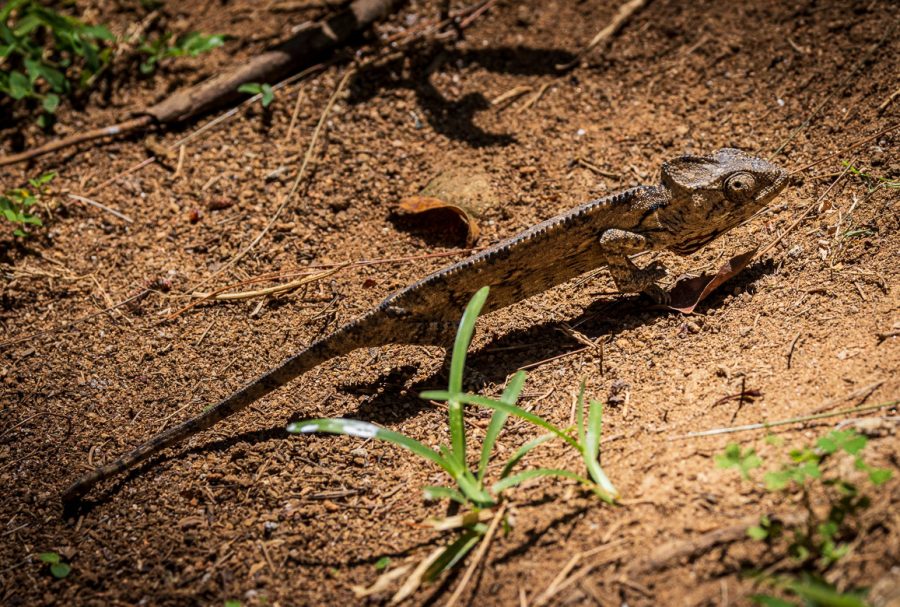
They are probably most famous for their distinct colours and their ability to change colour. They use that for camouflage, but also to convey their mood. And a dominant chameleon will show a different colour spectrum with more red and other bold colours than a submissive and weaker chameleon, which will show more grey and brown colours.
Their eyes are independently mobile, and their brains are constantly analysing two separate and individual images of the environment.
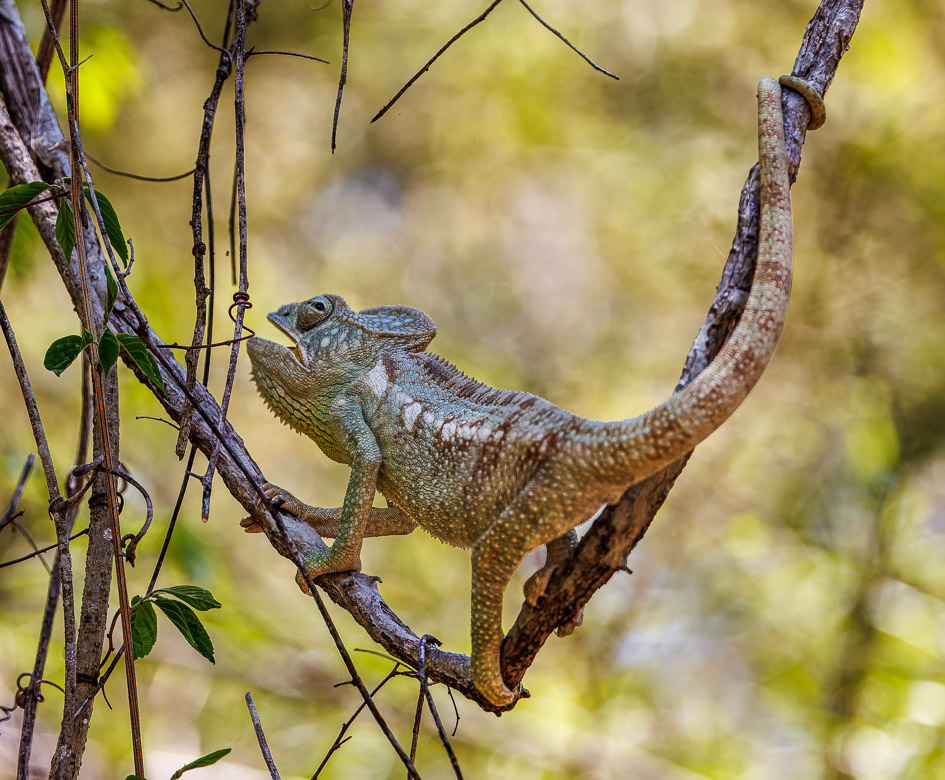
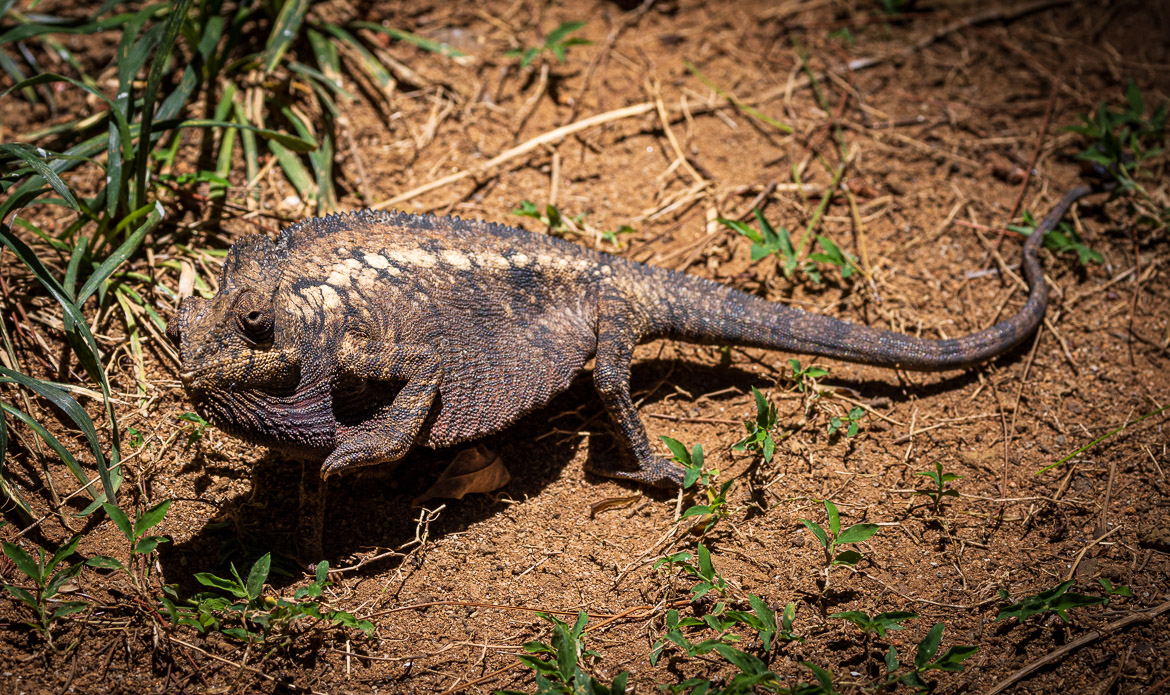
Their bodies are normally between 17-25 cm long and the tail adds as much as that to the total length. The tail can curl around a tree branch several times and helps a lot in movements and to keep the balance on a tiny tree branch.
Their long tongues are used to catch insects. The tongues are 1.5 to 2 times as long as their bodies. The chameleons live normally in trees, but I have also captured a few running on the ground.
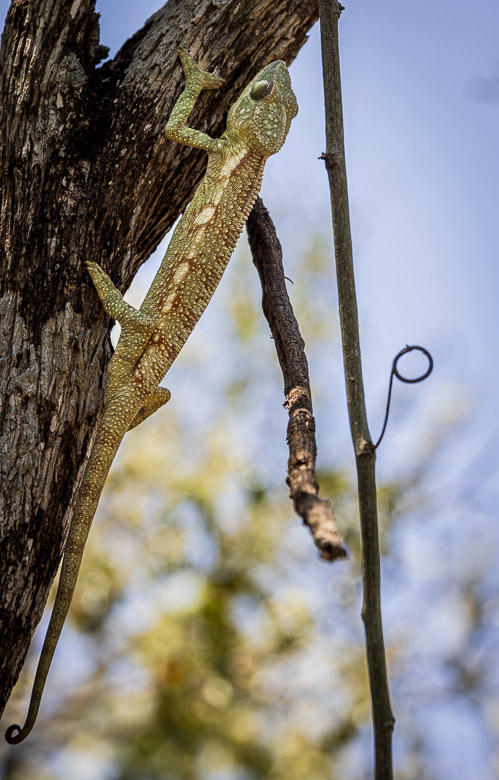
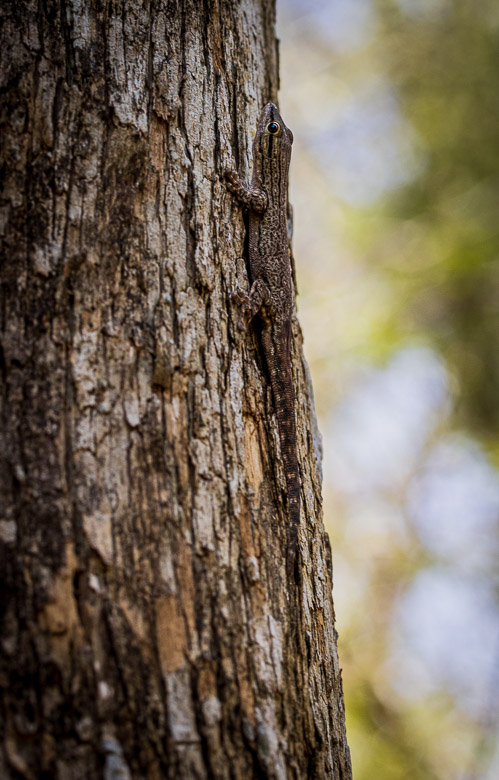
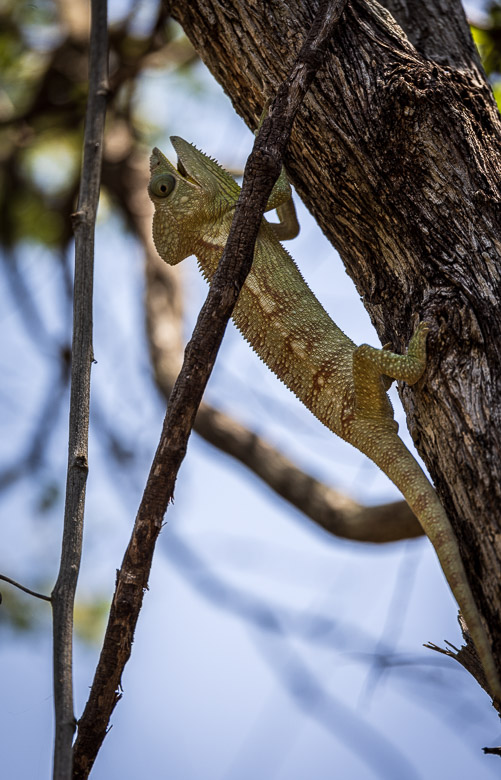
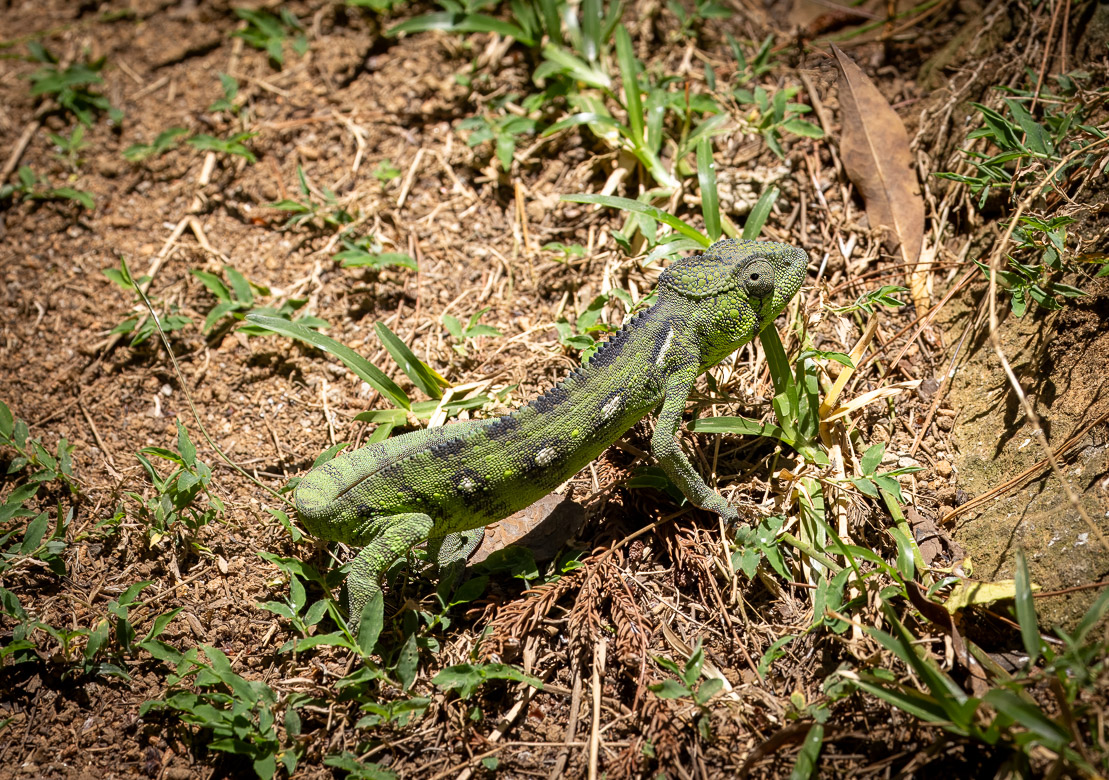
Apart from Madagascar the chameleons can mainly be found in Sub-Saharan Africa.
I must admit that I wouldn’t have been able to take most of my photos, if it wasn’t for the guides that accompanied us and pointed out the chameleons as they were hiding among branches, on tree-trunks or in-between leaves. But when they were found, they stayed calmly for my portraits, while I changed lens and tried to position myself for a good view. Very patients and calm subjects!
